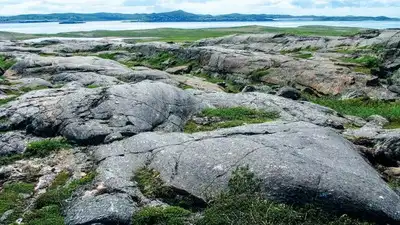
The story of
Earth's origins
lies hidden in ancient stones, forged in a time of intense formation and
volcanic activity
. Recently, a groundbreaking discovery in northern Quebec has shed new light on the planet's earliest days. Scientists have confirmed the presence of the oldest known rocks on Earth in a region near the village of Inukjuak, Nunavik. This remarkable find provides a rare glimpse into the Hadean eon, a mysterious and largely unknown chapter in
Earth
's history. The discovery has sparked intense scientific interest, offering new insights into the planet's formation and evolution. It brings us closer to understanding the Earth's unstable beginnings.
Oldest rocks found in Northern Quebec
According to earth.com, a groundbreaking study published in the journal Science has revealed the discovery of the oldest known rocks on Earth in northern Quebec, offering a rare glimpse into the planet’s earliest history. Collected in 2017 near the village of Inukjuak, Nunavik, these ancient rocks have sparked intense scientific interest due to their unusual properties and old composition. The research team employed advanced methods to determine the rocks' age, settling a long-standing debate that had dated the rocks to anywhere between 3.75 and 4.3 billion years old. The team's breakthrough came when they confirmed that intrusive rocks cutting through the volcanic layers were 4.16 billion years old, implying that the volcanic rocks themselves are even older.
This remarkable find offers a rare glimpse into the Hadean eon, a period of Earth's history marked by intense volcanic activity and a hostile environment.
How scientists accurately dated 4.16 billion-year-old rocks
To determine the age of the rocks, scientists employed
radiometric dating
, a precise technique that measures time based on the natural decay of elements within the rocks. They focused on samarium and neodymium, elements that undergo a slow and predictable transformation, with samarium decaying into neodymium at a known rate. By analysing the current ratio of these elements, scientists can calculate when the rock originally formed. The team used two independent isotope systems, both of which yielded the same result: the rocks solidified approximately 4.16 billion years ago. This method provides an accurate and reliable way to date ancient rocks, allowing scientists to reconstruct the Earth's history.
Hadean Eon made Earth a planet, but it wasn’t ready for life yet
The Hadean eon marked the violent and chaotic birth of Earth, around 4.6 billion years ago, with intense heat and volcanic activity. The planet was a molten rock, pummeled by space debris, and massive impacts likely shaped its formation, including the creation of the Moon. The surface was a scorching lava ocean with extreme volcanic activity, and the atmosphere consisted of toxic gases and steam. Despite these hostile conditions, Earth was setting the stage for life. As the Hadean eon came to a close around 4 billion years ago, the planet began to cool, forming a solid crust and oceans from volcanic steam and comet impacts. Ancient zircon crystals even suggest that water may have existed earlier than previously thought, slowly making the planet habitable, though devoid of life and fossils at this stage.Also read | Mice with two fathers? Scientists create fertile mice using DNA from two fathers

 6 hours ago
45
6 hours ago
45




























 English (US)
English (US)